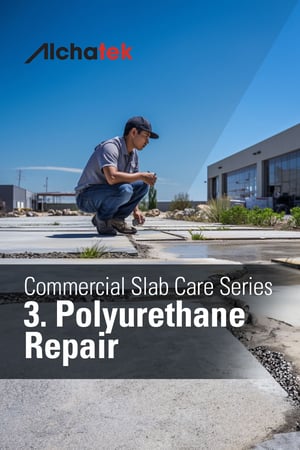
 In the field of commercial property management, maintaining the integrity of concrete slabs and soil stability is crucial. Although the general advantages of using polyurethane have been discussed, real-world case studies provide the most compelling evidence of its effectiveness. This post will explore two such case studies to demonstrate the efficacy of polyurethane in addressing complex slab and soil challenges.
In the field of commercial property management, maintaining the integrity of concrete slabs and soil stability is crucial. Although the general advantages of using polyurethane have been discussed, real-world case studies provide the most compelling evidence of its effectiveness. This post will explore two such case studies to demonstrate the efficacy of polyurethane in addressing complex slab and soil challenges.
Case Study - Agricultural Plant Slab Lift
The Challenge
Located just outside Saskatoon, Saskatchewan, a 12,000-square-foot cement manufacturing plant built in the 1960s was being re-purposed as an agricultural seed sorting facility. The plant's 10-inch thick, double rebar, 8000 psi concrete floors had settled due to an undetected broken water main on an adjoining property. The floors had sunk as much as 7 inches, becoming independent of the footings. Initial plans to demolish and replace the slabs were halted when they proved too resilient for even a track-hoe-mounted jackhammer. With the harvest season fast approaching, the property owner was in a bind.
Powerful Polymers
AP Lift 440, a high-strength, hydro-insensitive structural polyurethane foam, was chosen for the job. Known for its exceptional lifting and supporting capabilities, especially for heavy concrete floors that have settled due to water infiltration, it provided an ideal solution.
Painless Procedure
An Alchatek-certified contractor was brought in to tackle the problem. Five slabs were lifted, and three others were fine-tuned, correcting the unsuccessful attempts made earlier with cement grout. In less than a week, nearly 900,000 pounds of the sunken slab were lifted using only twelve 100-gallon sets of AP Lift 440.
Rapid Result
The polyurethane foam delivered a level of precision far superior to traditional mud jacking methods. This allowed for the installation of high-tech seed-sorting equipment just in time for the fall harvest. The floors remain perfectly level to this day, showcasing the long-lasting effectiveness of polyurethane solutions.
Case Study - New Construction Foundation Stabilization
The Challenge
A general contractor working on a new commercial construction project in Atlanta faced a critical issue during the foundation phase. Sheet pile panels were used for erosion control while pouring the foundation walls. However, a layer of gravel and soil between the panels and the foundation needed to be stabilized before the sheet piles could be removed, to prevent the soil from becoming unstable and compromising the foundation.
Powerful Polymers
Alchatek’s AP Fill 720 structural polymer was selected for its ability to permeate soil and encapsulate gravel, creating a solid mass. This polymer is known for its high strength and versatility, making it an ideal choice for foundation stabilization.
Painless Procedure
The crew inserted injection rods about 12 feet deep at a spacing ratio of 3 feet apart along the entire length of the foundation wall. The structural polymer was then injected until it bubbled up through the surface of the ground, indicating that the soil and gravel had been fully encapsulated.
Rapid Result
The soil and gravel layer was effectively locked into place. When the sheet piles were removed, only a thin gap remained, which was then filled with cement. This left a solid, supportive wall of soil, gravel, and grout to support the foundation, showcasing the effectiveness of polyurethane in foundation stabilization.
These case studies demonstrate the unparalleled effectiveness of polyurethane in addressing complex slab and soil issues in commercial settings. Whether you're dealing with an old structure requiring slab lifting or a new construction needing soil stabilization, polyurethane offers a rapid, precise, and long-lasting solution.



